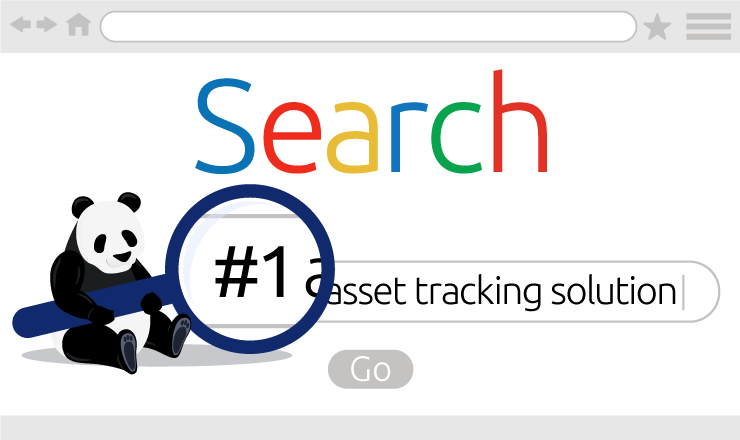What Is Mobile Device Management (MDM)? How It Works

Take Control of Your Assets
A personalized demo is just one click away.
Organizations everywhere rely on mobile devices like laptops and phones to enable their business operations. Like with any asset, it’s vital for companies to effectively track and manage these devices to ensure productivity. So, what is mobile device management and how does it work?
What is MDM?
Mobile Device Management (MDM) is the administration of smartphones, laptops, and tablets for the purposes of organizing, optimizing, and securing those devices. It consists of a combination of on-device applications and a robust backend infrastructure to support and manage all the devices an organization relies on. In this article, we’ll explore the purpose of MDM software and how it works.
What is mobile device management most essential for? In today’s on-the-go corporate environment, employees are just as likely to perform work remotely as they are in the office. When devices that can access secure organizational data can be taken anywhere, it’s particularly important that organizations develop a system to ensure that they are all protected and accounted for. MDM helps these sensitive devices remain secure, supported, and up-to-date.
So, who is MDM primarily used by in an organization? The IT department, of course. In a modern corporate environment, it’s up to IT workers to develop a responsive and scalable system for device management that consists of both processes and tools. Depending on the size of the organization and the number of devices it has to manage, many IT departments opt for a mobile device management software solution.
What is Mobile Device Management Software?
Mobile device management software is an application used for deploying, securing, monitoring, and updating an organization’s devices at scale. It is a type of software with a broad set of capabilities, from providing a standard set of on-device productivity tools for employees to securing mobile devices against hackers or other security threats.
A new mobile device will engage with an organization’s MDM software from the moment it enters the organization. The IT department will take charge of deploying an on-device application, connecting the device remotely to a backend system. From that moment on, the device will be integrated with the organization as a whole, capable of receiving security updates, access to organizational data, and/or assigned roles to the MDM platform on an as-needed basis. Each device will be integrated with the mobile device management software as long as the device owner is part of the organization–if the assigned employee leaves the company, the device can easily be rebooted and prepared for another user.
Effective mobile device management software should be able to maintain each device’s total security without stifling workplace productivity or flexibility. In the following section, consider some of the possible use cases of different MDM software solutions.
What is the Purpose of MDM software?
As you learn how MDM works, you may be wondering, what is the purpose of mobile device management software? Organizations that use MDM software save time, improve efficiency, increase security, and enhance employee productivity. An effective MDM software will also be able to account for all devices regardless of their differing operating systems.
Here are some of the potential use cases of a mature MDM software solution:
- Deploy preconfigured applications. Set up a workflow framework specific to your organization from the moment employees have the device in their hands.
- Standardize device capabilities. Ensure that all employees can use their mobile devices to access a base level of critical organizational tools and information, such as secure email.
- Identity and access management (IAM). Fully regulate different levels of employee capabilities depending on that employee’s role and what they need to do their job.
- Perform updates. Keep devices performing consistently, responsively, and securely by deploying regular software updates.
- Track devices with GPS. Minimize loss by keeping track of where a device is at all times. In case of theft, sensitive data can be remotely wiped from the device.
- Remote troubleshooting. For employees who work from home, MDM software can help IT teams seamlessly gain remote access and provide support.
Keep in mind that the purpose of mobile device management software is separate from asset management software as the two serve different purposes. While MDM solutions focus on managing the functionality and security of IT devices, asset management software enables organizations to track vital device lifecycle data and make data-driven maintenance and purchasing decisions.
Due to the complementary nature of these two kinds of software, MDM and asset management platforms often integrate with one another. A comprehensive asset management solution like Asset Panda can easily integrate with many types of MDM software, like Microsoft Intune / Endpoint, Cisco Meraki, and Kandji.
How to Integrate MDM Software with Asset Panda
While mobile device management software includes some overlap with asset management software (such as real-time tracking and GPS tools), each solution provides organizations with robust features to effectively manage their mobile devices. The two platforms are even more powerful together, giving businesses 100% transparency and control over their assets. IT administrators can use the MDM software to manage deployments, updates, and security; meanwhile, accountants and auditors can use asset management software to keep track of the age of each device and determine their replacement timelines, account for damage and loss, and budget for future device purchases. Now you may be wondering, how is mobile device management easily integrated with asset management software?
Asset Panda’s cloud-based solution seamlessly integrates with your MDM software so you can manage all your mobile device data in one centralized place. From multinational companies like Amazon, Dyson, and Toyota to small businesses and start-ups, organizations all over the world rely on Asset Panda to track, manage, and audit their fleets of mobile devices. Asset Panda is proud to have various MDM integration partners like Kandji, Cisco Meraki, and Google Device Manager, all of which can be connected to our platform in a few simple steps.
From smartphones to tablets to laptops and even Internet of Things (IoT) devices, Asset Panda manages all your mobile devices in one convenient platform. Discover how Asset Panda can meet your organization’s unique needs and request your personalized demo today.
Take Control of Your Assets
A personalized demo is just one click away.
Related News & Press

Learn more from an Asset Panda expert
Get a FREE consultation with an asset tracking expert to find out how you can transform your asset tracking.
Contact our Sales Team at (888) 928-6112


